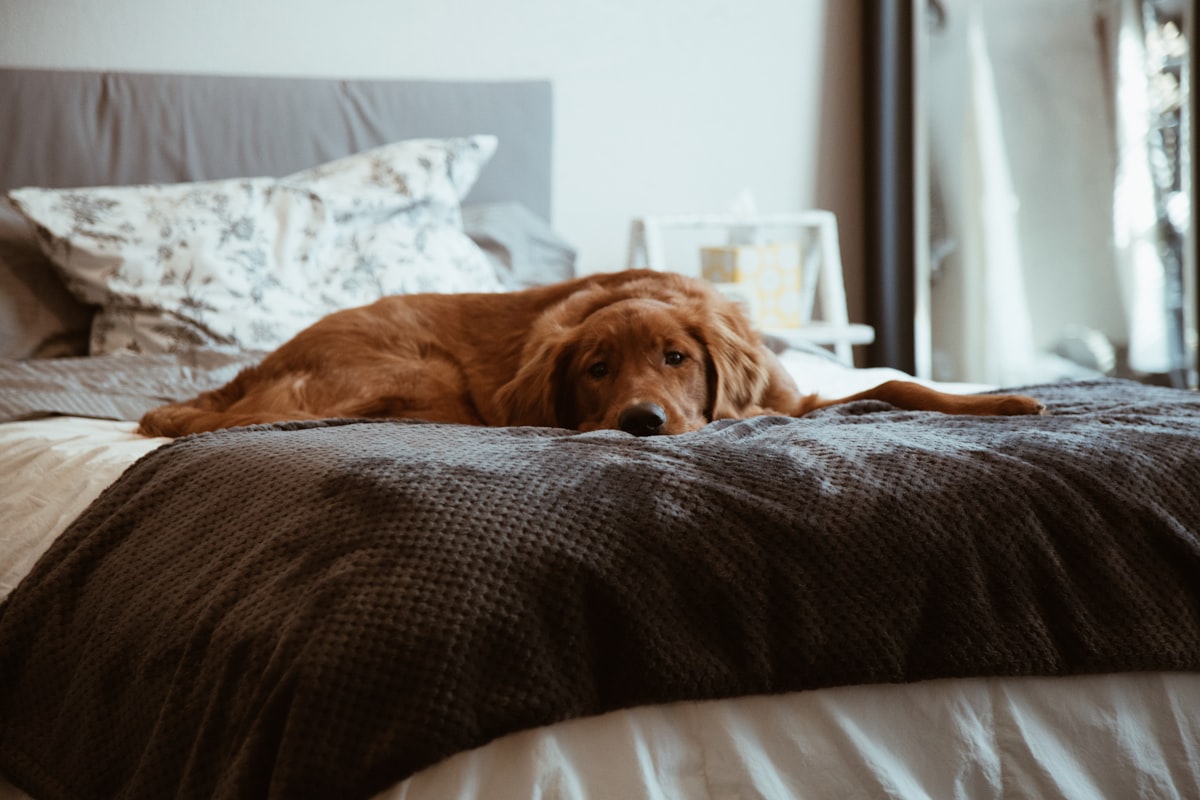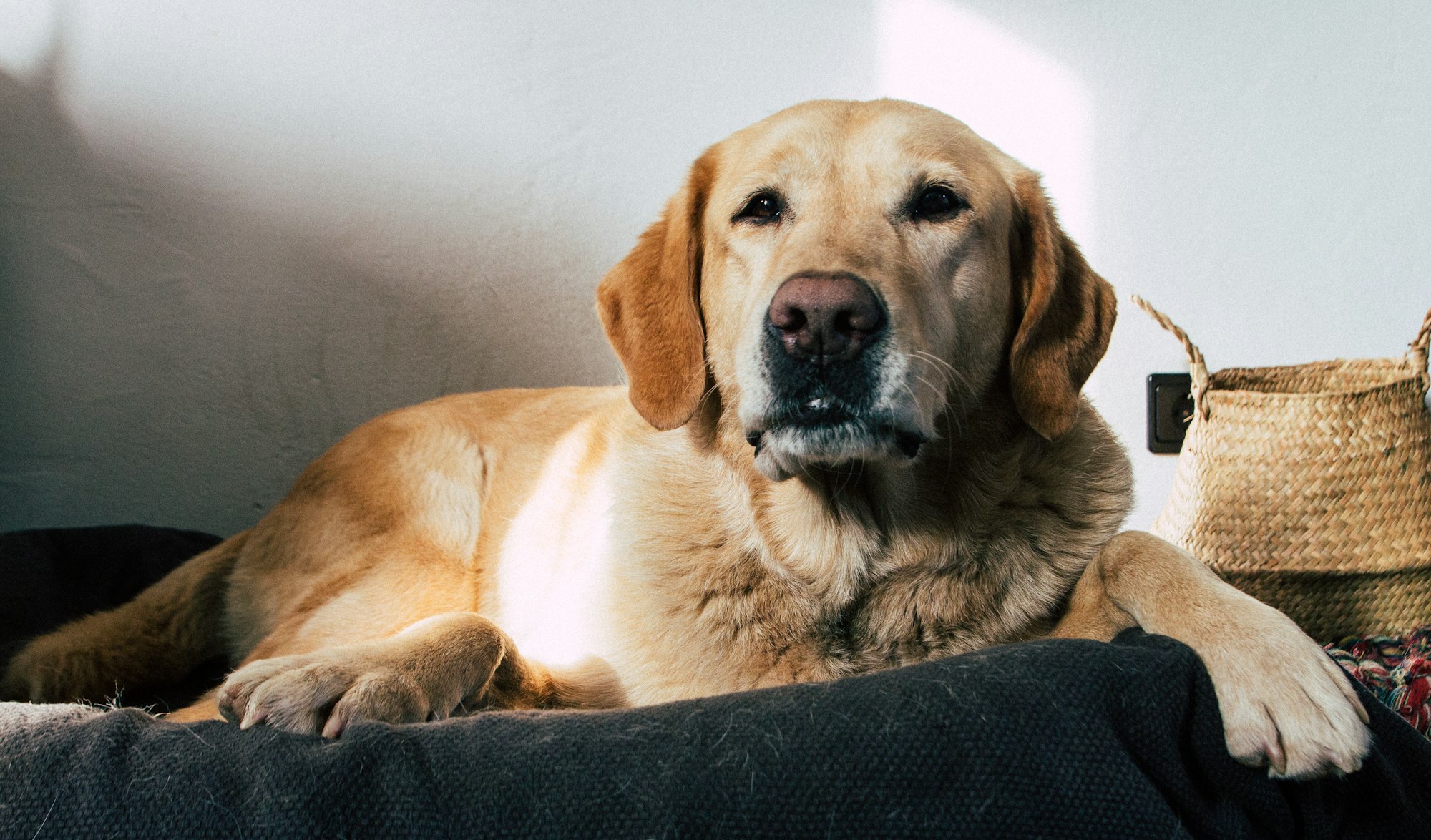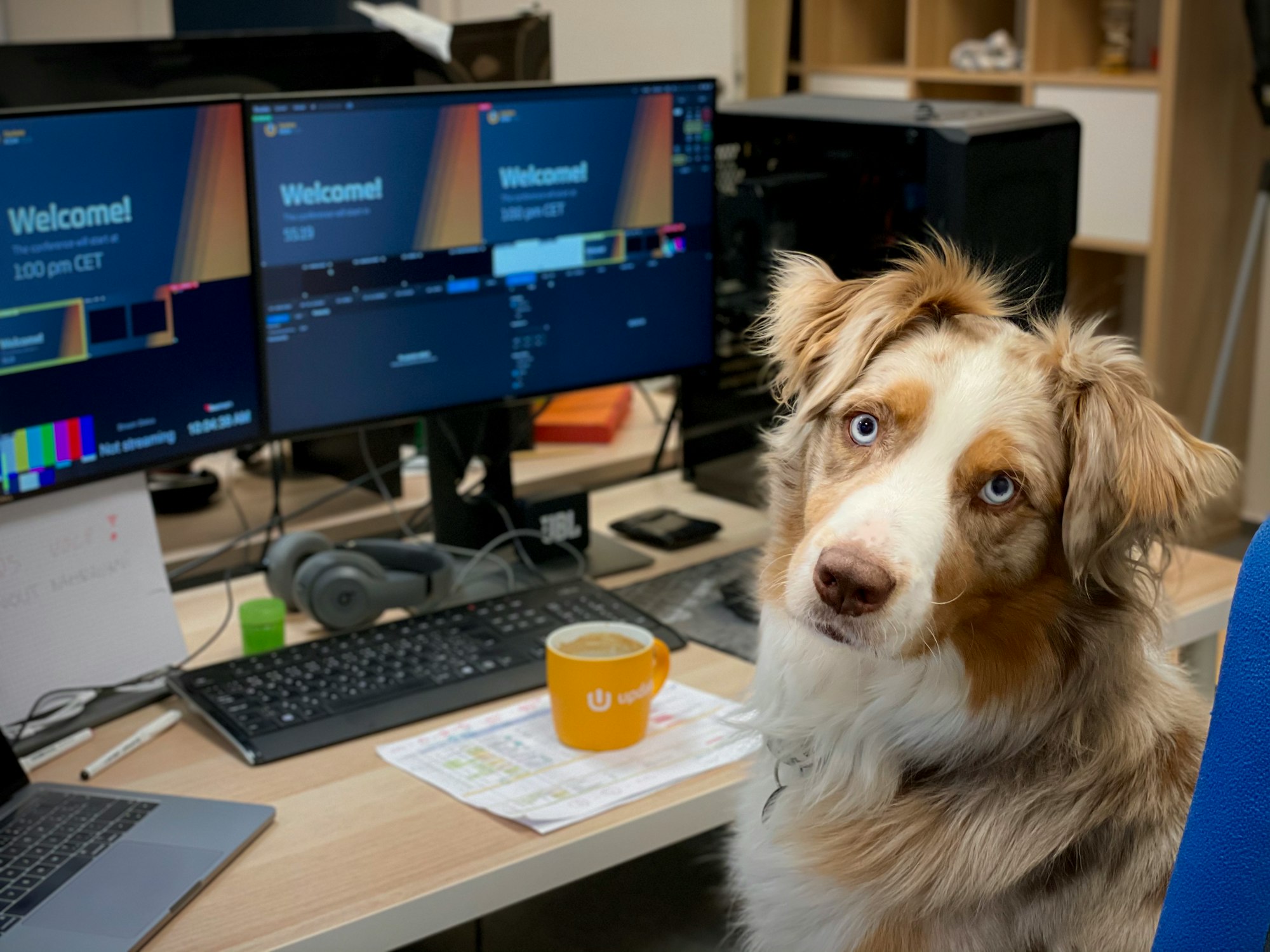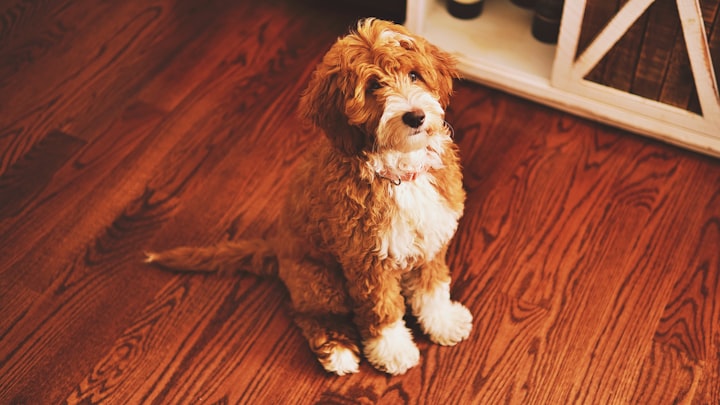10 Dog Breeds with High Separation Anxiety When Left Alone
Separation anxiety is a common issue among dogs, with some breeds more prone to it than others. In this article, we'll explore the dog breeds with the most separation anxiety and provide tips for managing and preventing this condition. 👀

In many dog breeds, separation anxiety is a prevalent trait. Dogs build strong connections with their owners in general. Therefore, they get anxious and cry for their people when left alone.
Why do dogs get separation anxiety?
Separation anxiety in dogs occurs when they are afraid of being separated from their owners for an extended amount of time. An abandonment situation occurs in your dog's mind.
How can you tell a dog has separation anxiety?

Destroying behavior - Chewing, destruction & digging - all are common behaviors when the anxiety is triggered. Your dog will chew and destroy objects, furniture, and door frames, will scatter clothes and objects all over the house, and even worse, it will self-harm.
Howling & Barking & Crying - when left alone your pup will bark or howl as regular behavior. Of course, this is not pleasant for anyone, and especially for your pup if left too much.
Pacing - in some dogs, this behavior is triggered when they're left alone and will walk or gallop along a specified path - in circular patterns or in straight lines back and forth.
Peeing and Defecating around the house - Yep, unfortunately, this is also a behavior triggered by separation anxiety. Some dogs are doing this uncontrollably even if they are trained to defecate only outside.
It can be worse. Some dogs are even eating their poop, a behavior called coprophagia.
Escaping from the area where he's/she's been left - When a dog with separation anxiety is left alone or separated from you, he may attempt to escape from the safe and controlled environment. Your pup may try to dig and chew through doors or windows, resulting to self-injury such as broken teeth, cut and scratched paws, and damaged nails.
What breed of dog has the worst separation anxiety?
- Poodle & all his crossbreeds
- Bichon Frise & Maltese
- Labrador Retriever
- Golden Retriever
- Border Collie
- Australian Shepherd
- German Shepherd
- Siberian Husky
- Cavalier King Charles Spaniel
- Vizsla
1. Poodle & all his crossbreeds

Poodles are at the top of the list of the most anxious dog breeds when left alone because they form really strong bonds with their owners.
Also called "one-person dog", this dog breed in any size (from toy to standard) is an affectionate dog breed that loves to be around his person. If separated, the anxiety is triggered and exhibits behaviors like howling, digging, chewing, destroying, jumping around the house spreading objects anywhere.
We have an entire article about poodle separation anxiety - symptoms and treatments if you are curious to dig more.
When is about its cross-breeds - the Labradoodle, Goldendoodle, and Cavopoo (some of the most popular doodle cross breeds) are on the list, too.
Labradoodle = Poodle & Labrador Retriever
Goldendoodle = Poodle & Golden Retriever
Cavopoo = Poodle & Cocker Spaniel
*** All these are affectionate dog breeds that get anxious when they are separated from their owner.
2. Bichon Frise & Maltese

Both Bichon Frise & Maltese are lively and enjoy the human presence and adore being very close to them, and cuddling.
That's why they are prone to separation anxiety and need to be prepared for spending time alone while you're at work or in town.
The Bichon Frise and Maltese that suffer from separation anxiety are prone to excessive barking and become destructive. They can have discoloration on their coat from constant tearing.
The most important thing you can do to help your Bichon Frise or Maltese separation anxiety is to increase their exercise and decrease their hyper attachment through sensitivity training. This type of training is difficult and is usually preferable to be done by a professional trainer - you can compare the pros and cons of both methods here.
3. Labrador Retriever

Labrador Retrievers are always happy and energic dog breeds, also very loving with their families and seek attention. They are often used as service dogs due to their pleasing nature.
Some Labs are overly reliant on their humans, putting them at the top of the list of dogs with severe separation anxiety. This can have a significant impact on the quality of their lives, so it is critical to immediately recognize the signs and treat the problem.
The adult Golden Retrievers can be left alone for let's say four hours, but not more than eight. Leaving a young pup Lab alone for an extended period of time is really cruel because they require toilet breaks, food, water, and mental stimulation. When left alone, Golden Retriever puppies are extremely curious and can get into danger.
Labs get anxious when separated from their families because they are sociable by nature. To assist a Labrador cope with separation anxiety, considerable training is required. So be ready with plenty of patience.
4. Golden Retriever

How much love fits in a Golden Retriever? All of it! - the right answer.
Goldens are loving, sensitive, empathetic dog breeds that need to love and be loved by everyone, especially by their owners. They are also very smart and trainable, that's why they're also used as serviced dogs.
And guess what? With such a big heart and affection to give to other people and animals, Goldens are prone to separation anxiety.
When they deal with this anxiety their symptoms are: barking and crying a lot, destroying objects and furniture, and sometimes even potty mishaps.
Like Labrador Retrievers, Goldens need a lot of training to overcome their separation anxiety.
Maybe another furry friend will ease their loneliness and anxiety if there is enough space and possibility.
Keep in mind that Golden Retrievers are very sociable dog breeds so it is not indicated to leave them alone for more than 6-8 hours.
5. Border Collie

Border Collies are very intelligent herding dogs that are made to run, work hard, and accomplish difficult tasks for their owners. Due to their higher level of trainability, are also utilized as service dogs.
Since they are so focused on their people, they may be more prone to experiencing separation anxiety.
As a result, they don't tolerate being left alone for long periods of time. They are also incredibly energetic, so confining them indoors for long periods of time with little or no pleasurable activities can cause significant anxiety.
A Border Collie can be left alone at home for maximum four hours.
If you have to leave your smarty Collie alone, be sure to make a safe area in your home and ensure that there is nothing for your pup to destroy. Place his/her favorite toys in the area and before leaving spend a few minutes playing with your furry friend. In this way, you'll ease a bit the anxious situation.
However, training should not be overlooked.
6. Australian Shepherd

The beautiful Australian Shepherd is an active and easy-going dog breed, just like his relative Border Collie.
Aussies love spending time with youngsters and get along well with other pets. These dogs make excellent family pets and are amazing obedience competitors, as well as herding and police dogs.
As, Border Collies, Aussies are very sociable dogs by nature. That's why they can become depressed if they are frequently left alone and are prone to separation anxiety. Some frequently anxiety behaviors Australian Shepherds have when left alone are drooling, pacing, destroying objects, biting, and chewing.
Under the age of six months, Aussie puppies should not be left alone for more than one hour per month of their age.
To prevent and overcome separation anxiety in your Aussie start the training by an early age. Start with promoting independence in your pup, by leaving the house for a short period of time. Then, gradually extend the length of time away every day. In this way, your Aussie will quickly learn that you'll always come back home to it.
7. German Shepherd

The good boy, German Shepherd has famous notoriety for being an honorable, hardworking, loyal, and very intelligent dog breed.
German Shepherds are often used as police dogs and service dogs because of their intelligence and guardian spirit. At home, they make the greatest companion to have. They know how to be gentle, playful, and also affectionate. They use to follow their owners everywhere because of their protective nature.
However, they are also notorious for being aggressive, which may be true if sufficient training is not provided and they experience bad situations like abandonment, fear, and aggression.
As they are very loyal and protective, German Shepherd is also prone to separation anxiety, when they are left alone.
Howling, barking, panting, drooling, and dilated pupils are indications of separation anxiety in German Shepherds. When left alone, they may continue to vocalize excessively and even have harmful behaviors such as destroying furniture, chewing, digging, and trying to escape.
To overcome their bad anxiety, they require proper early training and lots of exercises.
8. Siberian Husky

The Siberian Husky is a beautiful, athletic dog breed, that is very intelligent but also clingy. I think everyone knows them from those videos on social media where they're howling like crazy, and sometimes in the presence of a Golden Retriever.
Tho' they may seem like independent dogs and may be challenging for first-time owners due to their vocalizing skills and high energy, Huskies are also prone to separation anxiety.
Like wolves, Huskies are pack animals, and they are very loving and loyal to their owners.
Your Siberian Husky may growl, whimper, or otherwise express his dissatisfaction about being left alone when you leave the house. This is a frequent thing of separation anxiety in this breed.
9. Cavalier King Charles Spaniel

The Cavalier King Charles Spaniel is a gentle and affectionate breed. They enjoy human interaction and are known as the perfect lapdog.
This breed loves curling up next to its owner on the couch for a cozy day. Also, these cuties can follow you around the house like your own shadow.
But, unfortunately, Cavalier King Charles Spaniel is also a breed that has a reputation for suffering from severe separation anxiety. It's understandable, given their deep love for their owners.
The symptoms include persistent barking, destructive behavior, and peeing & pooping in the house.
For Cavaliers, more than four hours is too much to leave them alone. If you need to let your pup longer than four hours alone, be sure someone related comes to shortly visit him/she.
You can also create a safe haven using blankets with your smell, or even clothes and his favorite toys, away from sharp objects or areas that can represent a danger for your furry friend.
10. Vizsla

The athletic and alert Vizslas are exceptional companions that form strong bonds with owners and family members, including kids and other pets (even cats).
They are friendly by nature, so they thrive on attention and love. This means that they tend to suffer from high separation anxiety if left alone, even for a small amount of time.
This breed really needs to be around its families all the time. They're known as Velcro dogs (dogs that can't stay separated from their owners) because they're anytime and everywhere with their people.
When it happens to let a Vizsla alone, it will certainly howl, bark, and chew everything in his/her way. They're vocal by nature, so the howling can be something special and hard to deal with for your heart.
Be sure to take action in advance to get the puppy used to being left alone for at least 4 hours. That's why training is essential for a Vizsla to cope with separation anxiety.
Should I get a dog if I work full time?
If you know that your working program allows you to work remotely from home, then it is ideal. If you can work 4 hours from work, 4 from home is ok. If you have to work full time, it's not ok anymore. Dogs deserve more attention than a cat. Almost all dogs are prone to separation anxiety, so you need to think carefully before getting one, about what kind of risks you expose him, but also yourself.
Four hours are enough and acceptable to leave your pup alone at home. Also, proper training with good conditions is required when you have to let your furry friend at home.
Can separation anxiety in dogs be cured?
Yes, fortunately, separation anxiety in dogs can be treated if you discover the reason behind it. The owner, dog, and the source of the problem - all play a role in successfully healing separation anxiety.
The most important solution is to train your dog from a young age how to cope with being alone for some hours. Of course, the time alone shouldn't be more than 7-8 hours.
Besides training, there are many ways to treat this anxiety in your pup:
🎶 play some relaxing music for your dog
🪀 leave out an intellectually engaging toy
💁🏼♀️ hire a dog sitter
🐕 encourage it to relax by taking your dog for a walk before you leave
🧸 create safe heaven with toys & objects or clothes that you own
🪟 leave your dog somewhere where he can watch the outside "life"





Comments ()